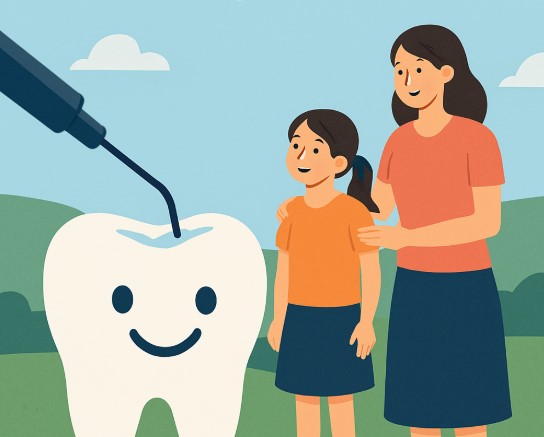In the battle against cavities, dental sealants are an effective weapon, particularly for young patients. These thin, protective coverings cover the chewing surfaces of the molars, premolars, and back teeth, which are where most cavities in children form. Dental sealants can quickly and painlessly protect these vulnerable areas from decay. If you’re considering cavity prevention methods for your child, consulting a pediatric dentist in Centennial can offer valuable insights and help you make the best decision for your child’s oral health.
Cavities are the most prevalent chronic illness in children. However, dental sealants dramatically lower the risk of decay by serving as a barrier against bacteria and food particles. Parents can make better decisions regarding their children’s dental care if they are aware of the advantages of dental sealants and how to apply them.
Introduction to Dental Sealants
Dental sealants are thin plastic coatings applied to the chewing surfaces of teeth, often the rear teeth, to prevent cavities. They swiftly develop a protective layer over the enamel by bonding into the teeth’s grooves and depressions. The Centers for Disease Control and Prevention claim that during a two-year period, sealants can shield treated teeth from 80% of cavities.
Why Dental Sealants Are Important
Dental sealants play a crucial role in oral health by creating a physical barrier against food particles and plaque. They work especially well on kids who might have trouble brushing their teeth thoroughly. WebMD notes that sealing teeth as they erupt ensures they are protected during critical development years. The danger of deterioration and the need for subsequent dental procedures is greatly decreased by this preventative measure.
The Dental Sealant Application Process
Dental sealants are easy to apply and do not cause any discomfort. It typically involves cleaning the tooth surface, applying a special gel to roughen the surface slightly, rinsing and drying it, and finally painting the sealant on the tooth. The dentist or dental hygienist then hardens the sealant using a special blue light. This entire process typically takes only a few minutes per tooth.
Benefits of Sealants for Children
Dental sealants offer numerous benefits for children. They provide an added layer of protection in hard-to-reach areas, often the sites of decay. By minimizing cavity formation, sealants can reduce the need for more invasive dental procedures later. They are cost-effective in the long run, as they prevent the need for fillings or crowns that result from untreated cavities.
Maintaining Sealants
While sealants provide robust protection, maintaining their effectiveness requires regular dental check-ups. During these visits, dentists check the condition of the sealants and can reapply them if they’ve worn down. Parents should encourage regular brushing and flossing as well as other good oral hygiene habits to maximize the protection that sealants offer.
Common Questions About Dental Sealants
Parents often have questions about dental sealants, including whether they are safe and effective. Sealants are made from safe materials and have been widely used for decades. Some may also wonder about the age at which children should receive sealants. Sealants should be applied when a child’s first permanent molars come in, around six. Speaking with a dentist about your worries and inquiries will guarantee that you make the best choices for your child’s oral health.
